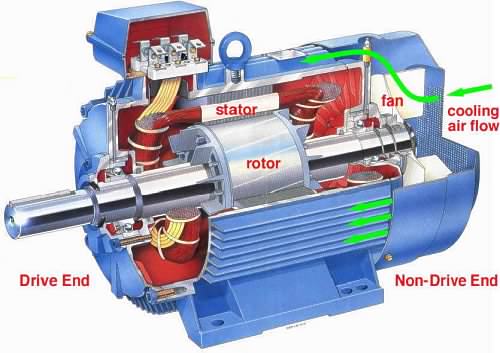A wound-rotor motor (Slip Ring Motor) is a type of induction motor where the rotor windings are connected through slip rings to external resistances. Adjusting the resistance allows control of the speed/torque characteristic of the motor. Wound-rotor motors can be started with low inrush current, by inserting high resistance into the rotor circuit; as the motor accelerates, the resistance can be decreased.
Squirrel Cage Motors have a heavy winding made up of solid bars, usually aluminum or copper, joined by rings at the ends of the rotor. When one considers only the bars and rings as a whole, they are much like an animal’s rotating exercise cage, hence the name.
| PROPERTY | SQUIRREL CAGE MOTOR | SLIP RING MOTOR |
|---|---|---|
| Rotor Construction | Bars are used in rotor. Squirrel cage motor is very simple, rugged and long lasting. No slip rings and brushes | Winding wire is to be used. Wound rotor required attention. Slip ring and brushes are needed also need frequent maintenance. |
| Starting | Can be started by D.O.L., star-delta, auto transformer starters | Rotor resistance starter is required. |
| Starting torque | Low | Very high |
| Starting Current | High | Low |
| Speed variation | Not easy, but could be varied in large steps by pole changing or through smaller incremental steps through thyristors or by frequency variation. | Easy to vary speed. Speed change is possible by inserting rotor resistance using thyristors or by using frequency variation injecting emf in the rotor circuit cascading. |
| Maintenance | Almost ZERO maintenance | Requires frequent maintenance |
| Cost | Low | High |











Great Post. Thanks for sharing